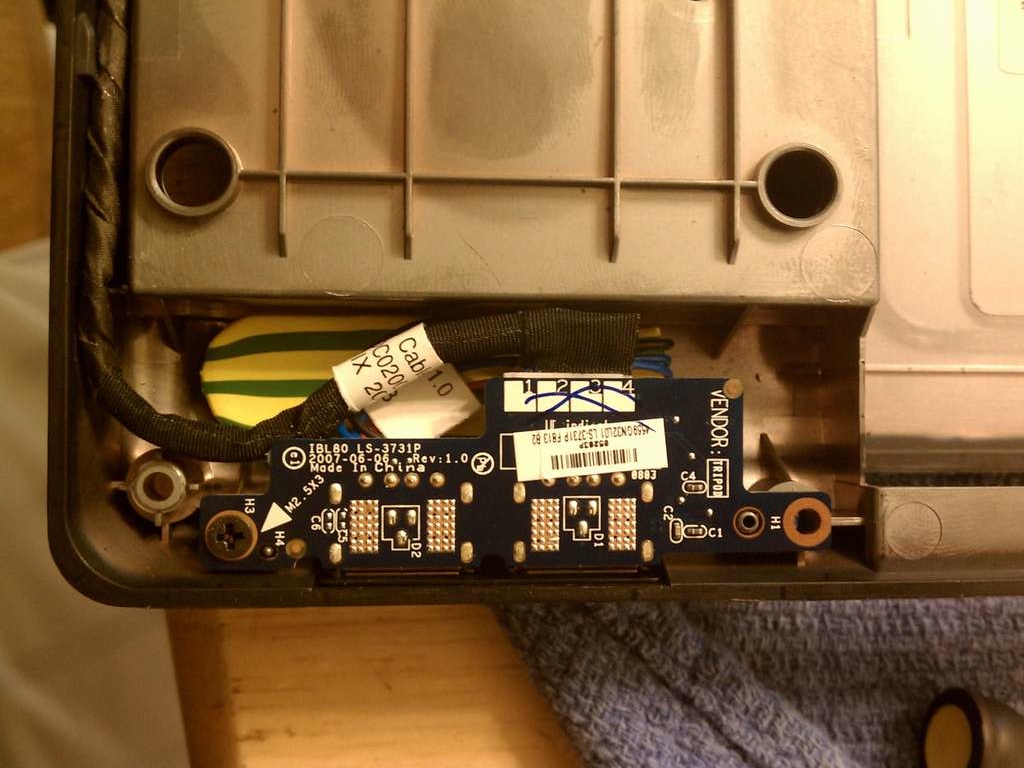In Pictures: 20 Do-It-Yourself Geek Projects From Instructables
The Do-It-Yourself Geek Awards
Remember MacGyver? He could make just about anything with a piece of string, a paper clip, and a pocket knife. Inventive technology enthusiasts can be just as handy. Even if you don't have a natural proclivity for such things, a site called Instructables makes it possible to emulate the power users who are. The community is full of simple, yet effective engineering feats, ingenious chewing-gum-and-paper-clip creations, and good old-fashioned tips. This feature includes some of the geekiest do-it-yourself achievements we've spotted there.
Homemade 3G Antenna
Here's an interesting way to improve the reception of a 2G, 3G, or even 4G wireless signal. You need an aluminum pie tin, a cellular modem, and a USB cable. The antenna is easy to put together, and can achieve a gain of 5 to 7 dBi, according to its creator.
Build A Battery Into A Mouse
The hassle with wireless mice is that they can go through batteries as if they were crisp, delicious bacon. Some older models need their power sources changed regularly, and alkaline batteries aren't cheap. Here’s a clever solution. It replaces the disposable batteries you might be accustomed to using with a battery pack from a cell phone (in this case, a Nokia) with a much longer life.
As for how to recharge it, there are two solutions: either pop the battery back into the old phone and plug it in, or get your hands on an external charger. They’re easy to find online. Do be careful, though. Lithium-ion batteries are not toys.
Build An Eight-Bit Computer
Do you like the aesthetic appeal of wires everywhere? Good. You'll need a lot of wire if you'd like to build your own eight-bit computer. Oh, you'll want some resistors, too, and a lot of time. Impressive.
Give Your Laptop Its Own 3G Modem
We like the idea of building a 3G modem into a laptop. Some mobile platforms already give you this option, but not all. The operation requires that you switch out your Wi-Fi card for a half-height model, if you don't already have one, solder on a MiniCard connector, install a MiniCard-based cellular modem (easily found on eBay), and add a SIM card reader. In this case, the platform's webcam was sacrificed in order to install an antenna.
A USB-Based Lamp
It's pretty common to find keyboards with LED backlighting and enclosures with lights that make it easier to plug in peripherals. If your machine doesn't include this practical refinement, there’s a solution, and it costs less than $2. You need an old USB-based flash drive, an LED, a little cable, and voilà.
Get Tom's Hardware's best news and in-depth reviews, straight to your inbox.
A Wireless Charger For Any Smartphone
One of the Palm Pre's coolest features was its optional Touchstone Charging Dock, which employed electromagnetic induction to enable wireless charging.
This solution will let you use a Touchstone with many of the smartphones still available on the market. It consists of a phone, of course, a back cover for a Powermat receiver (Powermat specializes in wireless charging), and a Palm Pre phone cover. Then, you have to replace the induction coil in the Powermat receiver with the one from the Pre.
For Those Inaccessible USB Ports...
Here's an unpretentious (but effective) solution for computers with USB ports that are hard to access. The parts list consists of two magnets, a USB extension cable, and a little self-setting rubber.
Eliminate The Mouse Receiver
A great many trackpads are terrible, compelling us to use mice instead. We have a number of fairly high-end mice here in the lab that communicate via Bluetooth. But if your favorite peripheral employs RF, you likely have an external receiver, which can be a pain to haul around. And it sticks out.
Using this modification, you can build the receiver right into your laptop's chassis, making it much more convenient.
Lock Your Computer With A Key
Here’s a trick for old-timers, enthusiasts, and anyone who owned an old 80486-based PC. It’s not a turbo button; rather, it's a real lock.
The idea is to salvage the key lock from an old tower case and adapt it (easily) to the power-up system of an ATX power supply by cutting off (physically) the signal between the button and the motherboard. Simple, fun, and nostalgeek.
Homemade PoE
When you need to power a camera, a Wi-Fi access point, or a telephone, PoE (Power over Ethernet) is very handy. The IEEE standard enables current to be carried over a Cat 5 cable, at least. But PoE-enabled networking hardware is often more expensive than the models without support. And that's what compelled one enthusiast to modify an access point to make it PoE-compatible.
-
esrever xpehThe Apple Kleenex box is probably one of the best uses for Apple's products.And its overpriced like everything apple.Reply -
Syaoran74 the usb light is over complicatedReply
-get usb cable rather than drive as they are already split in wires.
-find 5v and ground (usually red and black)
- get 5v led , resistor and wires.
-solder together.
-heatshrink
tada
i did something similar for a diy laptop cooler but using a 12v fan so didnt need the resistor and a card box as a platform -
Northwestern While some of these DIY projects are useful (Computer lock and double end thumb drive), others are actual products you can find in stores (USB Lamp and Phone charger).Reply -
geof2001 The kleenex box was actually slated for a release at one point. It was call and iBlow.Jobs cancelled it though after some very messy results with user testing. That and there was a high risk of patent infringementReply










